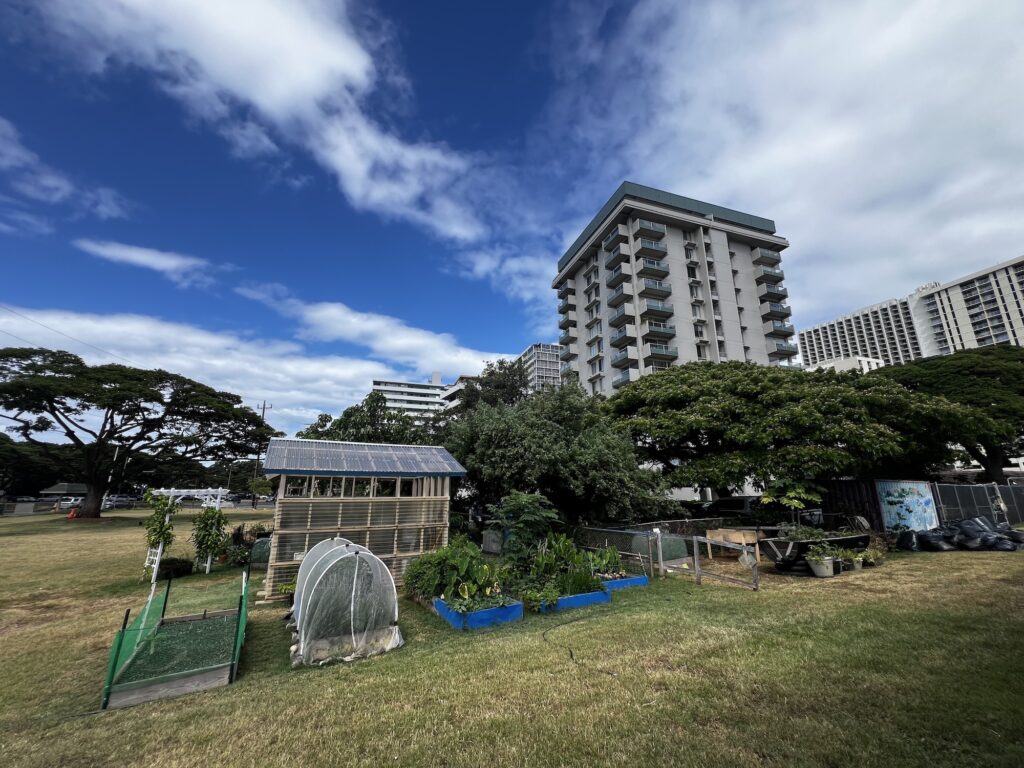
2024-07-12 20:25:02
When Garret Zakahi joined Jefferson Elementary School in Waikiki as principal, enrollment was under 300 students and there were far more residents requesting a geographic exception for their kids to attend other public schools than the other way around. In fact, 11 years ago, no one requested a GE to Jefferson.
That had to change.
So he had an idea. He wanted to create something special at Jefferson, a reason for parents to send their kids to the historic school on Kapahulu Avenue. In less than six months, he did just that — and more.
A little backstory: Zakahi majored in aquaculture at the University of Hawaii Manoa, following a passion he had growing up fishing in the streams in Aiea. It wasn’t until he realized working in the industry at the time wouldn’t pay the bills that he went back to UH for a master of education in teaching degree.
“I had an awakening,” Zakahi says, laughing, about earning $6.25 an hour raising shrimp.
With his aquaculture experience — and interest — he decided to build aquaponics systems at the school. Aquaponics is an approach to farming that integrates aquaculture and hydroponics to optimize the production of fish and vegetables. It easily fit into the school’s STEM curriculum while promoting the important message of sustainability.
Within six months — with Zakahi putting in long hours after school and on weekends — the program was up and running. It started with the older kids coming up with the design for four aquaponics systems, deciding what it would look like and what they would grow. In just five months, the kids had learned about system design, collected data on the mass of fish and plants they were growing and tracked water flow and pH levels. Oh, and they harvested tilapia, herbs and taro leaves that they shared with their
families and the school’s faculty and staff.
“If an administrator is excited about a project, it filters down to everybody else,” says Zakahi, 59, who’s worked in public schools in Hawaii for 33 years. “My passion became our passion.”


Over the last decade, Jefferson’s aquaponics program has grown. Today, the school has two fenced-off areas with dozens of grow beds full of plants and hundreds of fish, all cared for by students. Most of the equipment — grow beds, hollow tile, fencing, even the fingerlings — have been donated to the school.
The two areas — he calls them the 21st Century Learning Centers — flank the main walkway on campus, and that was done on purpose.
“So when you’re looking left and right, all you see is opportunity,” he explains.
Every child, from pre-K to fifth grade, works in these centers, from feeding fish to measuring plants to harvesting crops.
The school also added about two dozen small community garden plots near the aquaponics systems. Some 35 residents, most of whom live in nearby condos, come on campus before 7:30 a.m. and after 3 p.m. to work in their gardens. The school gets “zoo doo,” a high-value mixture of mostly elephant poop from the Honolulu Zoo, in exchange for banana stumps to feed the animals. Suffice it to say these gardens are thriving, with snap peas, cherry tomatoes, taro, cucumbers, peppers and a variety of herbs.
“It was an opportunity for us to give back to the community,” Zakahi says, adding that the majority of the families who own plots have kids attending the school.
Jefferson’s aquaponics program has become so popular families line up for produce and fish, all provided for free. Every teacher, staffer and family gets two heads of Manoa lettuce a year, all grown from seed by the students in three aquaponics systems. And for everything else — taro, ung choy, herbs — there’s a pluck-don’t-pull policy.


Over the past decade, Zakahi has been sharing his experience with other teachers interested in starting aquaponics programs at their schools. Just this week, teachers from Kaiser High School visited him to find out how they can expand their existing aquaponics system.
Aquaponics provides a way for schools, especially in urban areas, to integrate farming into their STEM curriculum. And there’s a tangible output: food.
“It’s all about sustainability,” Zakahi says. “Or, as I like to call it, sus-STEM-ability.”
His plan worked, too.
Today, Jefferson has 350 students, some of whom attend the school on GEs. But that’s not what he’s most proud of.
He loves the community that has been created around the school — the volunteers who work in the gardens, the families who enjoy the fresh fish and veggies and the kids who are excited about learning.
“This really is a hidden gem,” he says.
“Hawaii Grown” is funded in part by grants from Ulupono Fund at the Hawaii Community Foundation and the Frost Family Foundation.
Civil Beat’s education reporting is supported by a grant from Chamberlin Family Philanthropy.






